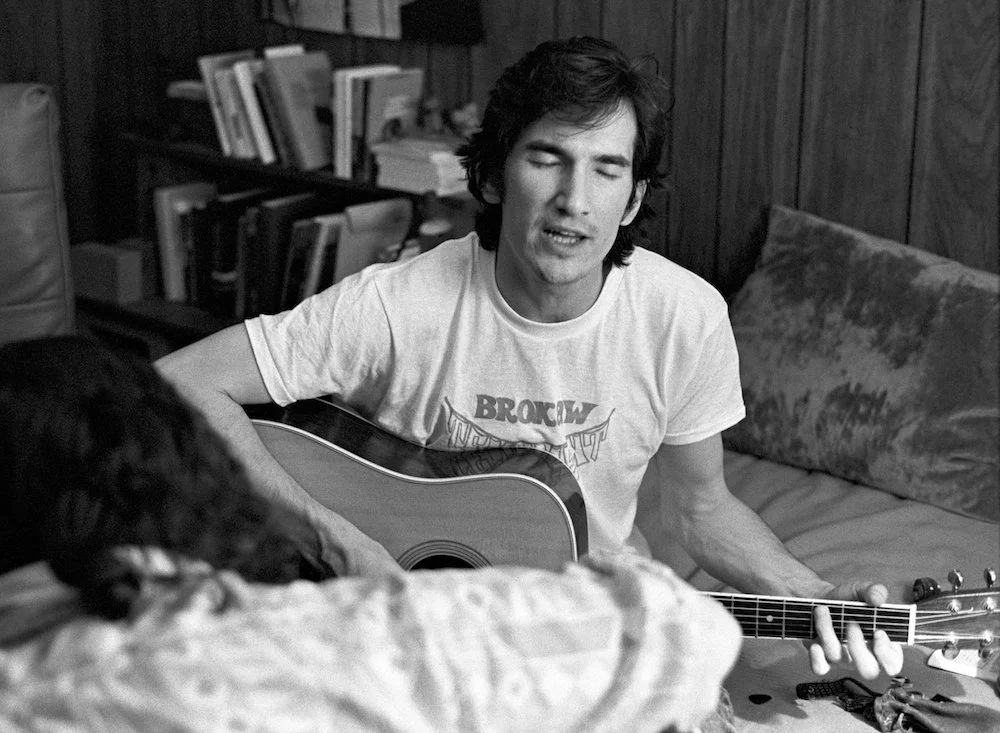Less is More?
As long as humans have held the capacity for creativity, artists have struggled with knowing when to stop. A common thought has always been “less is more”, the idea that the addition of too many elements to a creation will make it bloated and unfocused. With music, the line between minimalist and maximalist is extremely apparent. On one hand, if a song is good, it should be just as moving played in a solo acoustic format as it is with a large group. Yet, this rule falls apart when looking at things like classical music. If an iconic orchestral piece must be played by a large group, does that mean it isn’t of high quality? Seems as if the rule is “less is more, sometimes”.
The lone artist in a stripped back setting is an idea that does have some weight. An artist like Townes Van Zandt is an excellent example. Townes has albums recorded in top studios in New York and Nashville, with iconic producers like Cowboy Jack Clement. Many feature his acoustic guitar augmented with percussion, moody string arrangements, and more. Yet, his songs seem to be at their most potent with him alone, like on the brilliant live album Live at the Old Quarter. The recording is at times scratchy, you can hear the coughs of patrons and the squeaks of their chairs as they stand up and walk to the bar for another drink. Technically, its not a great recording, but it perfectly captures the beauty and intensity of Townes’ songwriting. At his core, he’s a storyteller, a traveling troubadour at his best when he’s most vulnerable. Though his studio albums are great in their own right, the additional elements often added tend to obscure his songs. When he’s alone on a stage, his songwriting is fully exposed, distilled into its purest form.
On the flip side, an artist that at least on the surface seems to be the exact opposite of the less is more approach would be someone like Brian Wilson. Works like his beloved masterpiece Pet Sounds or the mythical unfinished Smile are noteworthy for their maximalism. The songs are painstakingly composed, and feature an array of instruments played by top session musicians, as well as the precise vocal harmonies of his fellow Beach Boys. Songs such as "Don't Talk (Put Your Head on My Shoulder)" show off Wilson’s ability to push a composition into new territory with complex string and horn arrangements. Pet Sounds in particular is commonly regarded as a perfect album and one of the best works in popular music. This is in large part due to the complexity of the arrangements and instrumentation. Would the album be as good if all the additional elements were stripped back? Songs like “God Only Knows” are classics that are still good songs played alone on a piano, but the beautiful instrumentation and vocal parts on the original version lift the song to even greater heights.
An artist that constantly traverses the spectrum of minimalist to maximalist is Miles Davis. As a trailblazer in multiple sub-genres of jazz, he has been a part of recordings that are both fairly minimalist and quite dense with instrumentation. Take a record like Kind of Blue for example. Though it was an important milestone in the development of modal jazz and features some fairly complex songwriting, the instrumentation itself is fairly straightforward for a jazz album as it features six musicians in total. There are no massive orchestral arrangements in the background of the songs, and this allows them to feel more direct. One can focus on the beautiful tones of Davis’ horn as it directs the tight group of musicians behind him.
Contrast that album with something like the jazz-fusion zenith Bitches Brew. Songs on the album sometimes feature up to twelve musicians, including multiple percussionists, pianists, electric guitarists, and more. Davis processes his horn through effects like wah pedals, giving them a sharp textural quality that seems almost alien. The songs are in many ways opposite of Kind of Blue; they are twisting and meandering, featuring flashy and wild sounds from an endless sonic palette. It was Davis taking the bombast of 60’s rock music and stretching it as far as it could go before collapsing in on itself. Neither record suffers from being too maximal or too minimal, they are both perfect albums that utilize those methods to create something special.
The reality is that neither method of creation is correct. What it really comes down to is knowing what tools you have at your disposal and how best to apply them to a song. Some songs shine best with just a vocalist and guitar, and some are impossible to create without an entire room packed full of musicians. Having the awareness and taste to properly serve a piece of music is what takes something good and makes it great.
